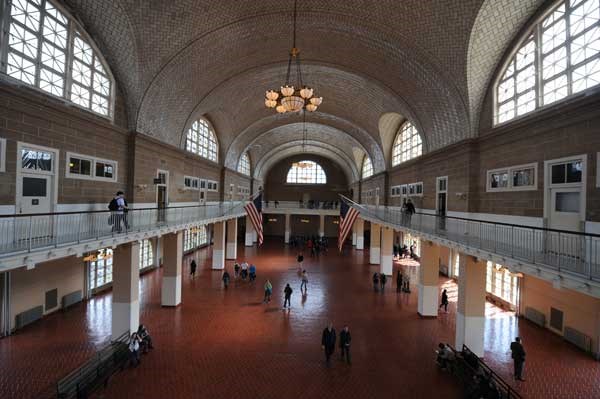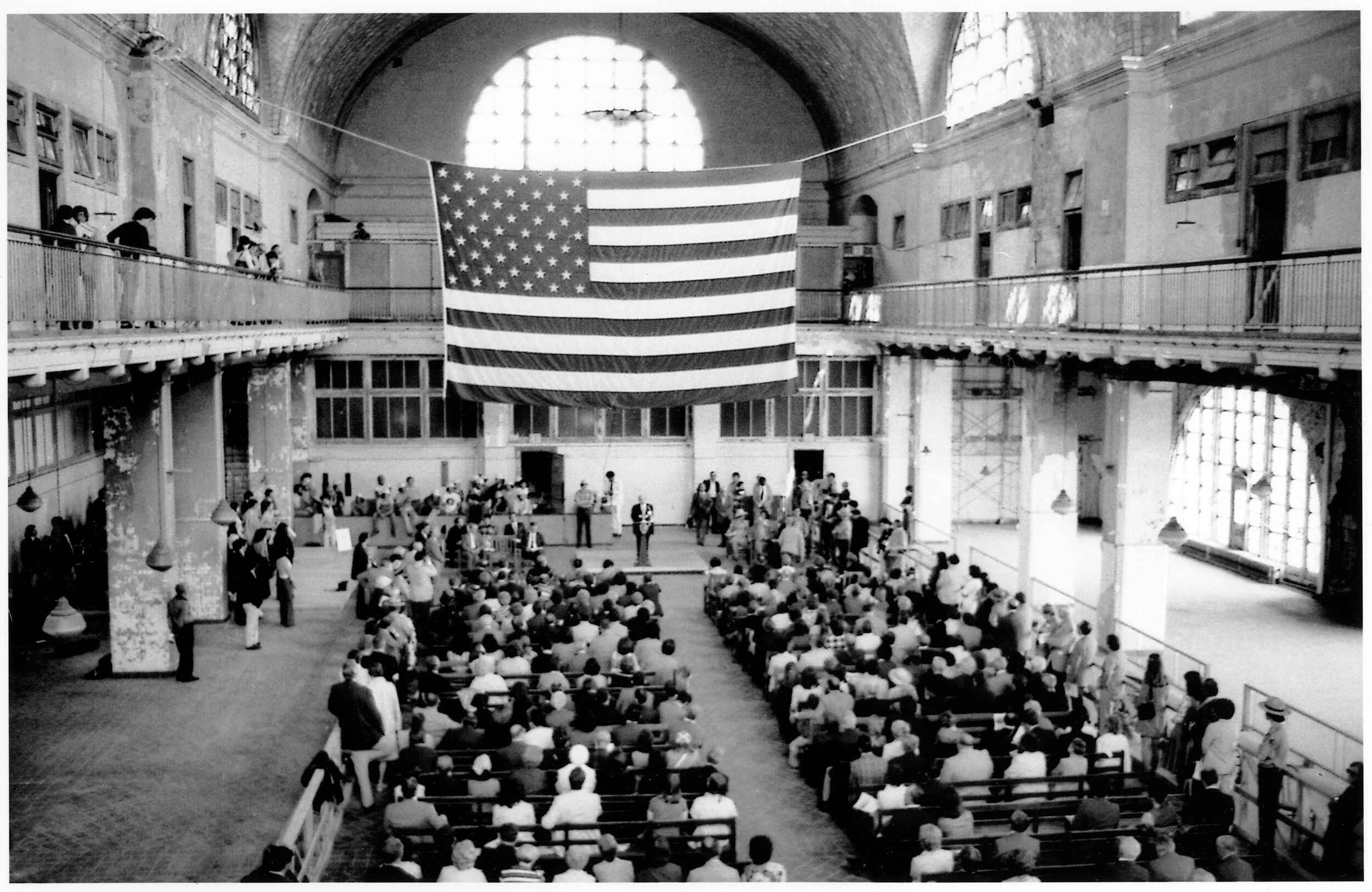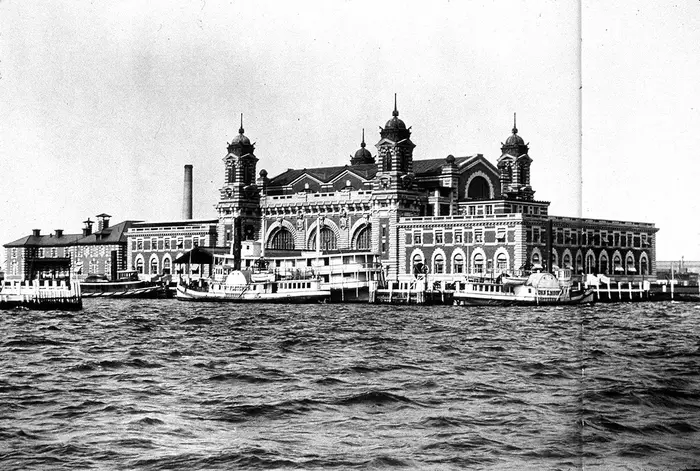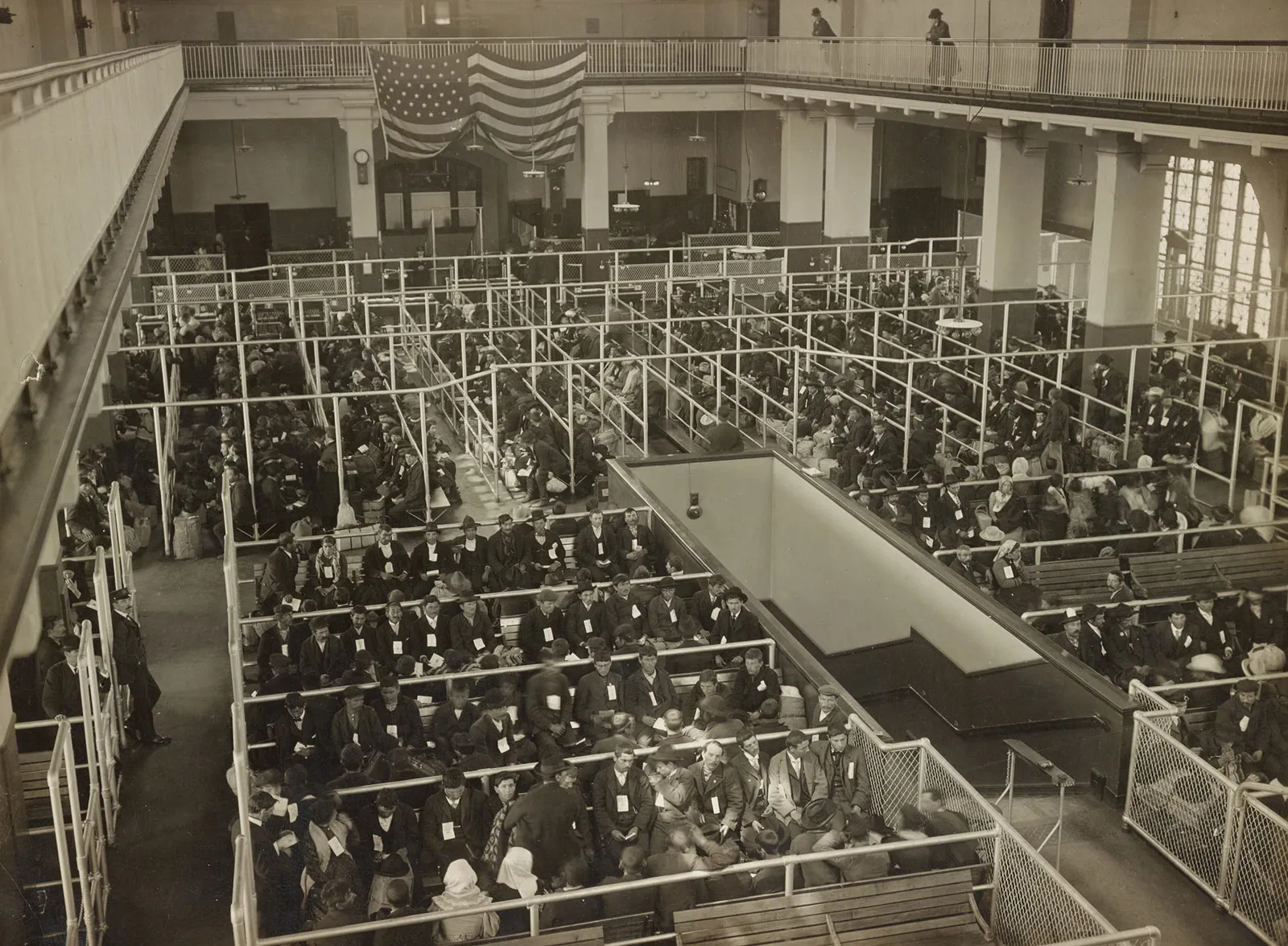Ellis Island




Ellis Island
The Ellis Island Immigration Hall, also known as the Great Hall, is one of the most iconic spaces at Ellis Island, which served as the primary immigration station for the United States from 1892 to 1954. Located in New York Harbor, Ellis Island processed millions of immigrants, most of whom were arriving from Europe.
And just like the immigrants you arrive to this location but after your visit to the Statue of Liberty. The great hall building itself is impressive with its red brick exterior amd what is striking as you pull up to the island is the star shaped jetty's.
The Great Hall, also known as the Registry Room, on Ellis Island contains information about the immigration process and the experience of immigrants:
- Medical examinations: Doctors and inspectors looked for signs of illness or contagious diseases.
- Legal examinations: Inspectors asked immigrants questions about their name, hometown, occupation, destination, and how much money they were carrying.
- Immigration laws: Immigrants encountered the complex demands of immigration laws.
- Decision to enter the country: Passengers were told whether they could enter the country or be sent back to their original country.
- Historic medical inspection: Doctors watched for a limp, labored breathing, or other suspected troubles.
- Temporary displays: The Great Hall may have temporary displays, such as artwork from World War 1 that involves icons related to the Statue of Liberty and Ellis Island.


Significance of the stairwell
On one of my first visits to Ellis Island i noticed that the "Great Hall" used to have a staircase in the centre (as in the picture below centre), and on investigation i found that these were specifically the "Stairs of Separation", which held significant emotional and practical importance for immigrants passing through the immigration station. This staircase played a pivotal role in determining the next steps in the lives of those who had just undergone the inspection process.
- "Stairs of Separation": The main staircase at Ellis Island was called the "Stairs of Separation" because it divided immigrants into different paths, often separating families and groups based on their final destinations or outcomes of their processing.
- Left Side: Immigrants heading to New Jersey or other parts of the country via trains.
- Right Side: Immigrants heading to New York City or nearby locations.
- Center Stairs: Unfortunately, the center stairs were often used by those who were detained or deported. These individuals either needed further medical or legal inspections or were sent back to their home countries if they did not meet the entry requirements.
- Emotional Impact: The staircase was a powerful symbol of the uncertainty and mixed emotions that immigrants faced. For some, it meant a joyful reunion with family members or the start of a new life in America. For others, it was a moment of fear and sadness, especially for those who were detained or faced deportation after a long and arduous journey.
- Medical Inspections: The staircase also served a practical function in assessing the physical health of immigrants. As people descended the stairs, doctors watched for signs of lameness, difficulty walking, or other health problems. This could lead to further medical examinations if any issues were observed.
- A Symbol of Transition: For many immigrants, this staircase represented a major turning point in their lives. After passing through the Great Hall, this was the moment where they would find out if they could begin their new lives in the U.S. or face additional scrutiny. The stairs thus symbolized the separation between the old world and the new.
The Stairs of Separation remain one of the most poignant and symbolic aspects of the Ellis Island experience, capturing the tension between hope and uncertainty that defined the immigrant journey.